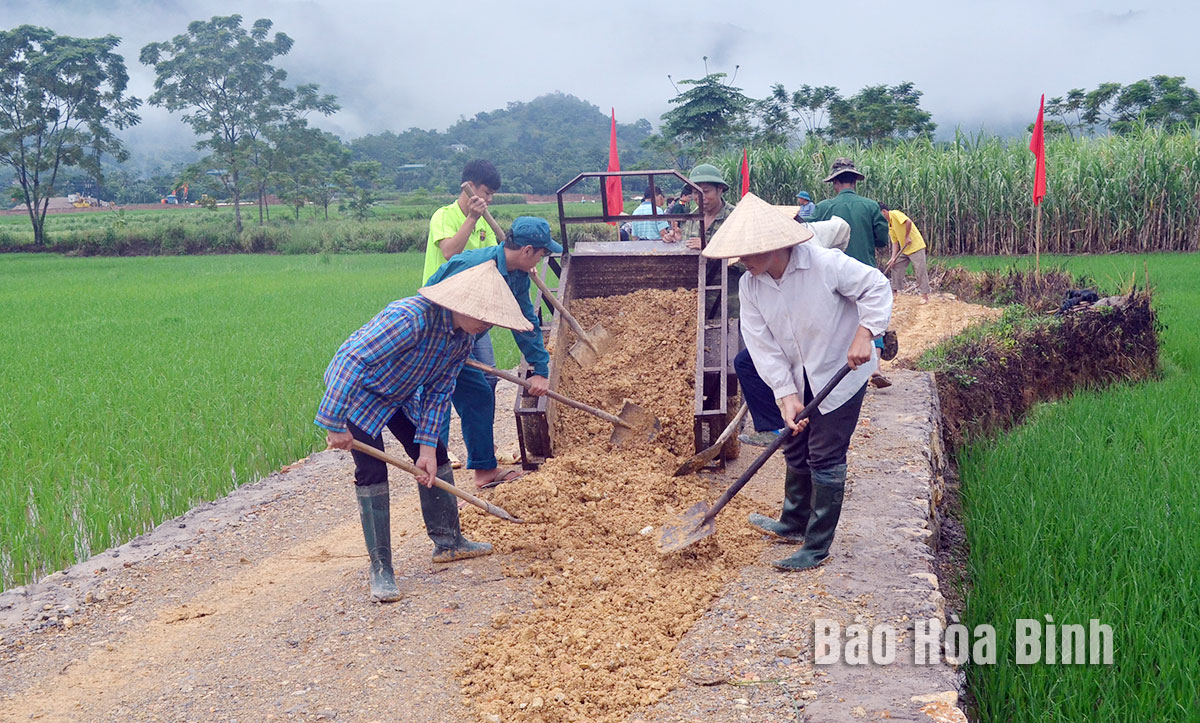
Up to now, Kim Boi district has 6 out of the16 communes meeting the standards of the new rural areas including communes: Nam Thuong, Sao Bay, Vinh Dong, My Hoa, Dong Bac, Vinh Tien (reaching 37.5%); no communes are meeting the standards of the advanced or model rural areas.

Kim Boi district has determined to focus the
resources to complete the essential infrastructure for the communes trying to
reach the goal of the new rural areas in the period of 2021 - 2025 (In the
photo: The investment in repairing and upgrading in-field traffic in Sao Bay
commune).
According to the planned targets assigned by the
Provincial People's Committee, by the end of 2025, 10 communes are meeting the
standards of the new rủal areas in Kim Boi district, accounting for 62.5% of
the total number of the communes in the region; 4 out of the 16 communes
meeting the advanced rural standards (accounting for 25%); 1 out of the 16
communes meeting the standards of the model rural areas (accounting for 6.25%).
However, according to the District People's Committee, during the
implementation process, there are many difficulties, especially in the
resources to implement the infrastructure criteria for the communes trying to
reach the finish line. Through reviewing and assessing the actual needs, the
District’s People's Committee has proposed that the Provincial People's
Committee consider and support funding for implementing 5 projects with a total
estimated capital of 38.9 billion VND. These are the essential infrastructure
projects, making an important contribution to the district completing its
investment plan for the communes trying to achieve the standards of the new
rural areas, the advanced and model rural areas in the period of 2021 - 2025.
Hoa Binh province is undergoing a dynamic transformation amid Vietnam’s national digital transition. Building on Poliburo’s Resolution No. 57-NQ/TW on breakthroughs in science, technology, innovation, and national digital transformation, the province has rolled out a wide range of practical action plans. A standout initiative is the "Digital Literacy for All” movement, an effort to ensure that no one is left behind in the digital era.
Hoa Binh province is undergoing a dynamic transformation in the wake of the national digital transformation movement. Building on Resolution No. 57-NQ/TW of the Politburo on breakthroughs in science, technology, innovation, and national digital transformation, the province has implemented a wide range of practical action plans. A standout initiative is the "Digital Literacy for All” movement ambitious effort to ensure that no one is left behind in the digital age.
With a spirit of unity and proactive problem-solving, the Party Committee, the government and the people of Dong Lai Commune (Tan Lac District) have made great strides in implementing the resolutions of the 24th Party Congress of the commune for the 2020 - 2025 term. Focusing on leadership and practical actions, the commune has brought the Party’s resolutions into daily life, creating strong impacts and pushing the local development forward.
Amid the nationwide push for digital transformation, young people in Hoa Binh Province are stepping up as dynamic pioneers, applying technology to enhance Youth Union operations and expand the reach of youth-led initiatives. Through creativity and adaptability, Youth Union organizations at all levels have introduced a series of practical solutions, contributing to modern governance and community development.
In recent years, An Nghia commune, located in Lac Son district, has stepped up administrative reform, focusing on improving the quality and efficiency of its single-window service unit for receiving and processing administrative procedures. These improvements have helped create favourable conditions for local residents and organisations to handle administrative procedures, contributing to the commune’s broader socio-economic development.
The Prime Minister-approved master plan to develop the multi-use value of forests ecosystems through 2030, with a vision to 2050, aims to improve the management and sustainable use of forest resources, create jobs, increase incomes, and improve the living standards of ethnic minorities, people in mountainous and remote areas, forest workers and those living near forests.



